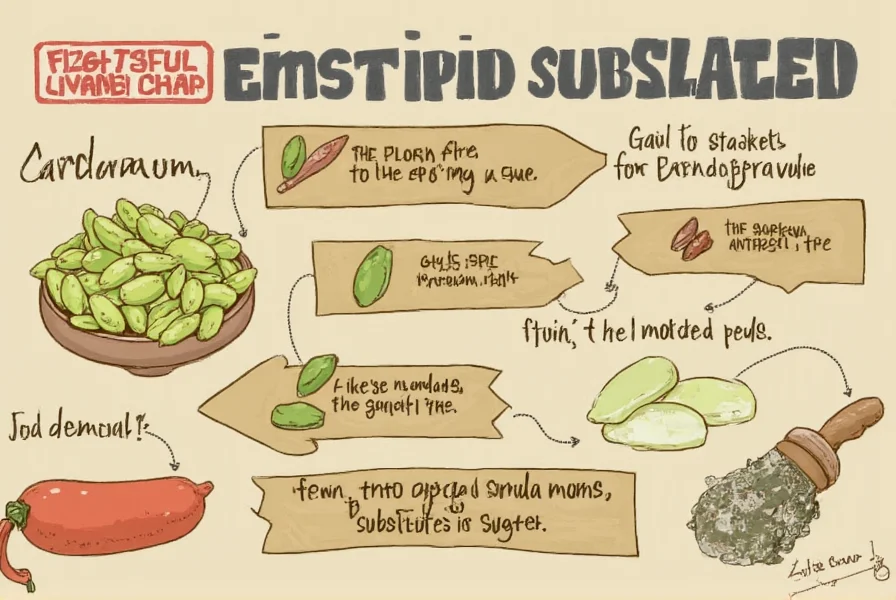Table of Contents
Introduction
Nutmeg is called "nuez moscada" in Spanish. This term literally translates to "musk nut," reflecting its aromatic properties. When searching for this spice in Spanish-speaking countries, you'll always see "nuez moscada" on packaging or in recipes. This article explains the Spanish name for nutmeg, its culinary applications in traditional dishes, and practical guidance for selecting and using this versatile spice.

What Is Nutmeg?
Nutmeg is a tropical evergreen tree native to the Banda Islands in Indonesia. The nutmeg seed is used as a spice, while the mace, which is the reddish covering around the seed, is also used in cooking. Nutmeg has a warm, sweet, and slightly nutty flavor that adds depth to both sweet and savory dishes.
It's important to note that nutmeg contains a compound called myristicin, which can be toxic in large quantities. So, always use it in moderation—especially when cooking for children or pets.

Nutmeg in Spanish
"Nuez moscada" is the universal Spanish term for nutmeg across all Spanish-speaking regions. Unlike some spices that have regional variations in naming, "nuez moscada" is consistently used in Spain, Mexico, Argentina, and other Spanish-speaking countries. The name originates from "nuez" (nut) and "moscada" (musk), describing its aromatic characteristics.
While nutmeg isn't a dominant spice in traditional Spanish cuisine like saffron or paprika, it plays a subtle but important role in specific dishes. You'll commonly find it in desserts such as rosquillas (Spanish doughnuts) and mantecados (shortbread cookies), where it enhances warm, aromatic notes. In savory applications, it appears in certain stews, seafood sauces, and occasionally in churros recipes for added complexity.
Frequently Asked Questions
What is nutmeg called in Spanish?
Nutmeg is called "nuez moscada" in Spanish. The term literally translates to "musk nut," reflecting its aromatic properties. When shopping for nutmeg in Spain or Spanish-speaking countries, look for this term on packaging or ask for "nuez moscada" at specialty food stores.
Is nutmeg commonly used in traditional Spanish cuisine?
While not as prominent as spices like saffron or paprika, nutmeg does have a place in traditional Spanish cooking. It's used more subtly than in some other European cuisines, typically appearing in specific regional dishes, holiday recipes, and baked goods rather than being a staple in everyday cooking.
What Spanish dishes typically contain nutmeg?
Nutmeg is commonly found in Spanish desserts like rosquillas (doughnuts), mantecados (shortbread cookies), and some varieties of churros. It also appears in certain meat fillings for empanadas, some seafood stews, and occasionally in creamy sauces that accompany fish or poultry dishes, particularly in northern regions of Spain.
How much nutmeg should I use in Spanish recipes?
Spanish recipes typically use nutmeg sparingly—a pinch (about 1/8 teaspoon) for most dishes serving 4-6 people. Remember that nutmeg intensifies over time, so it's better to start with less and adjust after the dish has cooked for a while. In baked goods, recipes might call for slightly more, up to 1/4 teaspoon per batch.
Can I substitute nutmeg in Spanish recipes?
While each spice has unique properties, you can substitute allspice (pimienta de Jamaica) in a 1:1 ratio for nutmeg in most Spanish recipes. For a milder alternative, try a small amount of cinnamon. However, keep in mind that authentic Spanish dishes relying on nutmeg's distinctive flavor may lose some character with substitutions.
Where can I buy nutmeg in Spain?
In Spain, you can find nutmeg (nuez moscada) in most supermarkets, especially in the spice aisle. For higher quality whole nutmeg, visit specialty food stores, mercados (local markets), or Asian grocery stores. Some traditional Spanish apothecaries (herbolarios) also sell high-quality spices. Online retailers like Amazon.es and specialty Spanish food websites offer various nutmeg options as well.
Practical Tips for Using Nutmeg
Here are some helpful tips for incorporating nutmeg into your cooking:
- Grate fresh nutmeg: Ground nutmeg loses its potency quickly, so it's best to grate it just before use with a microplane or nutmeg grater.
- Use in small amounts: Nutmeg has a strong flavor, so a little goes a long way. Start with a pinch and adjust to taste.
- Pair with cinnamon or cloves: These spices complement each other well and create a rich, warm flavor profile.
- Add to baked goods: Nutmeg is a classic addition to pies, cakes, and cookies, especially those with apples or pumpkin.
- Use in beverages: Try adding a sprinkle of nutmeg to hot chocolate, coffee, or mulled wine for a cozy twist.
Comparison Table: Fresh vs. Ground Nutmeg
| Feature | Fresh Nutmeg | Ground Nutmeg |
|---|---|---|
| Flavor Intensity | Strong and aromatic | Weaker and less vibrant |
| Shelf Life | Up to 6 months | Up to 3 months |
| Best Used For | Finishing touches, baking | Quick recipes, mixing into batters |
Buying Guide for Nutmeg
If you're looking to buy nutmeg, here are some key factors to consider:
Types of Nutmeg
There are two main types of nutmeg:
- Whole nutmeg: These are the actual seeds and should be purchased in small quantities because they lose their flavor quickly once ground.
- Ground nutmeg: This is more convenient but tends to have a shorter shelf life. Look for brands that use vacuum sealing or nitrogen flushing to preserve freshness.
Features to Look For
- Freshness: Check the expiration date and ensure the packaging is sealed tightly.
- Origin: Nutmeg from India, Indonesia, or Sri Lanka is typically high quality.
- Purity: Avoid blends that contain fillers or other spices unless you're specifically looking for a mix.
- Organic Options: If you prefer organic products, look for certifications like USDA Organic or EU Organic.
Advantages of Buying Whole Nutmeg
While ground nutmeg is more convenient, whole nutmeg offers several advantages:
- Retains its full flavor and aroma longer
- Can be used in both sweet and savory dishes
- More cost-effective over time if you grind it yourself
Use Cases and Target Audience
Nutmeg is versatile and appeals to a wide range of users:
- Chefs and home cooks: Ideal for enhancing both sweet and savory dishes.
- Bakers: Perfect for holiday treats and seasonal baked goods.
- Food enthusiasts: Great for experimenting with new flavors and recipes.
Suitable Occasions
Nutmeg works well in various settings:
- Holiday baking: Add it to gingerbread, fruitcake, or spiced cookies.
- Winter drinks: Use it in mulled wine, hot cocoa, or spiced cider.
- Dinner parties: Enhance the flavor of stews, sauces, or roasted vegetables.
Conclusion
Nutmeg, known as "nuez moscada" in Spanish, may not be the most dominant spice in traditional Spanish cuisine, but its subtle presence elevates many beloved dishes. Whether you're baking holiday treats or enhancing savory recipes, understanding the Spanish name and proper usage ensures you get the most from this aromatic spice.
Remember to always start with small amounts and use it strategically. When shopping in Spain or Spanish-speaking countries, simply ask for "nuez moscada" to find this essential ingredient.










 浙公网安备
33010002000092号
浙公网安备
33010002000092号 浙B2-20120091-4
浙B2-20120091-4